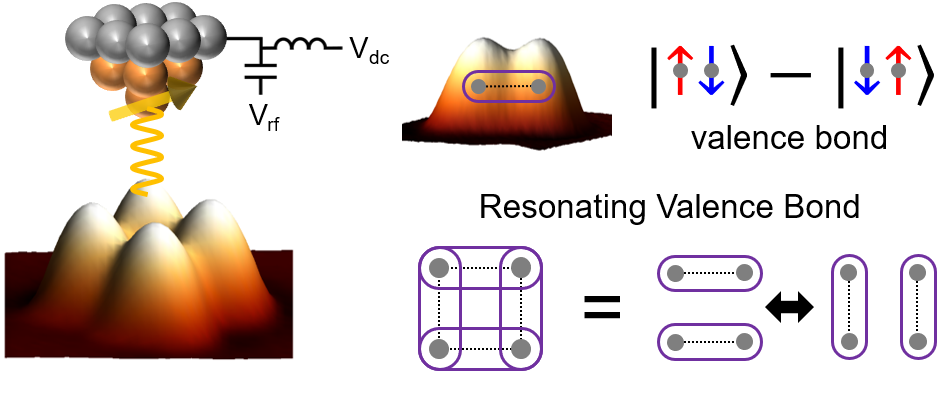주메뉴
- About IBS 연구원소개
-
Research Centers
연구단소개
- Research Outcomes
- Mathematics
- Physics
- Center for Underground Physics
- Center for Theoretical Physics of the Universe (Particle Theory and Cosmology Group)
- Center for Theoretical Physics of the Universe (Cosmology, Gravity and Astroparticle Physics Group)
- Dark Matter Axion Group
- Center for Artificial Low Dimensional Electronic Systems
- Center for Theoretical Physics of Complex Systems
- Center for Quantum Nanoscience
- Center for Exotic Nuclear Studies
- Center for Van der Waals Quantum Solids
- Center for Relativistic Laser Science
- Chemistry
- Life Sciences
- Earth Science
- Interdisciplinary
- Center for Neuroscience Imaging Research (Neuro Technology Group)
- Center for Neuroscience Imaging Research (Cognitive and Computational Neuroscience Group)
- Center for Algorithmic and Robotized Synthesis
- Center for Nanomedicine
- Center for Biomolecular and Cellular Structure
- Center for 2D Quantum Heterostructures
- Institutes
- Korea Virus Research Institute
- News Center 뉴스 센터
- Career 인재초빙
- Living in Korea IBS School-UST
- IBS School 윤리경영


주메뉴
- About IBS
-
Research Centers
- Research Outcomes
- Mathematics
- Physics
- Center for Underground Physics
- Center for Theoretical Physics of the Universe (Particle Theory and Cosmology Group)
- Center for Theoretical Physics of the Universe (Cosmology, Gravity and Astroparticle Physics Group)
- Dark Matter Axion Group
- Center for Artificial Low Dimensional Electronic Systems
- Center for Theoretical Physics of Complex Systems
- Center for Quantum Nanoscience
- Center for Exotic Nuclear Studies
- Center for Van der Waals Quantum Solids
- Center for Relativistic Laser Science
- Chemistry
- Life Sciences
- Earth Science
- Interdisciplinary
- Center for Neuroscience Imaging Research (Neuro Technology Group)
- Center for Neuroscience Imaging Research (Cognitive and Computational Neuroscience Group)
- Center for Algorithmic and Robotized Synthesis
- Center for Nanomedicine
- Center for Biomolecular and Cellular Structure
- Center for 2D Quantum Heterostructures
- Institutes
- Korea Virus Research Institute
- News Center
- Career
- Living in Korea
- IBS School
News Center
Tackling quantum many-body states using an atomically precise, bottom-up approachUsing the breakthrough ESR-STM technique, researchers from the IBS Center for Quantum Nanoscience collaborated with a US-based team to construct quantum-mechanically coupled artificial spin chains and reveal their quantum many-body states, including the resonating valence bond state.
Much of the progress in nanotechnology has traditionally pursued a top-down approach, such as miniaturization in the semiconductor industry. However, this method faces a minimum size limit of a few atoms due to the emergence of dominant quantum effects at that scale. Due to this reason, molecular manufacturing of complex structures with atomic-level precision requires a paradigm shift in the research efforts towards a bottom-up approach. The scanning tunneling microscope (STM) offers an unprecedented spatial resolution in its ability to precisely manipulate individual atoms, which allows the researchers to delve into a bottom-up approach to engineer artificial structures at the atomic scale. Furthermore, an STM equipped with electron spin resonance (ESR-STM) provides a breakthrough in the field of nanoscience by allowing the precise quantum control of individual atoms’ spin states. “Building artificial structures by assembling one atom at a time remains a technical marvel. This technology enables us to control the electronic spins of the atoms within a nanostructure, which opens up possibilities of future experiments that can further our understanding of quantum mechanics,” states Andreas Heinrich, Director of the IBS Center for Quantum Nanoscience (QNS). In a study published in Nature Communications on February 15, 2021, researchers from QNS collaborated with IBM in the US to construct artificial quantum spin arrays on a surface using an STM. The team engineered the quantum states of the spin arrays using a tunable atomic-scale magnetic field emanating from the tip of the STM. Then the arrays’ quantum many-body states were measured at sub-atomic resolution using electron spin resonance. These coupled spins featured strong quantum fluctuations due to antiferromagnetic exchange interactions between the neighboring atoms. Atom-selective ESR measurements on the spin arrays gave access to the properties of exotic quantum many-body states, such as a finite-size realization of a resonating valence bond state. “Atom-selective measurements of these spin arrays provide a versatile quantum-matter toolkit, which allows highly entangled quantum states to be generated and probed in detail,” said Kai Yang from IBM. “Atomic-scale experimental modeling of coupled spin systems, enhanced by atom-selective ESR-STM measurements, opens a new avenue to explore nanoscale spin science,” said PHARK Soo-hyon from QNS. “This bridges the gap between the physics of individual atoms and macroscopic objects, and it may provide a microscopic understanding of exotic physical phenomena such as spin liquid and high-temperature superconductivity, as well as a platform to design well-defined atomic-scale spintronic devices.” IBS Communications Team |
| Next | |
|---|---|
| before |
- Content Manager
- Public Relations Team : Yim Ji Yeob 042-878-8173
- Last Update 2023-11-28 14:20












